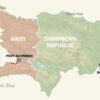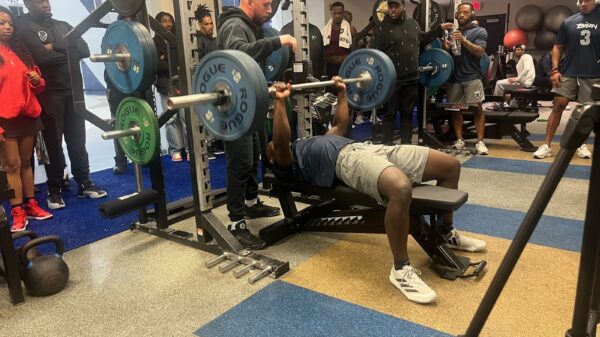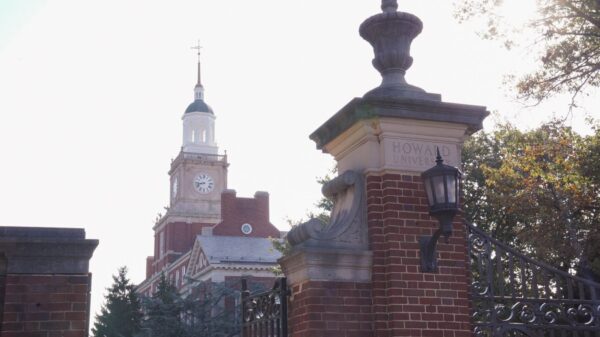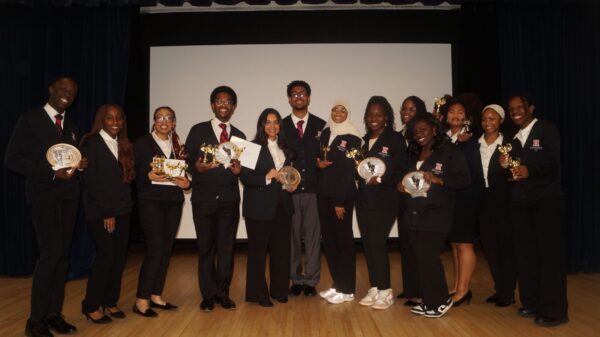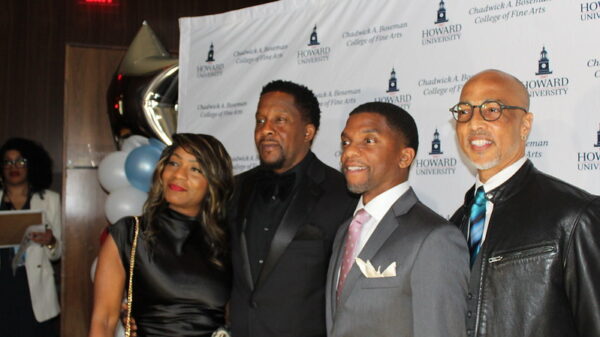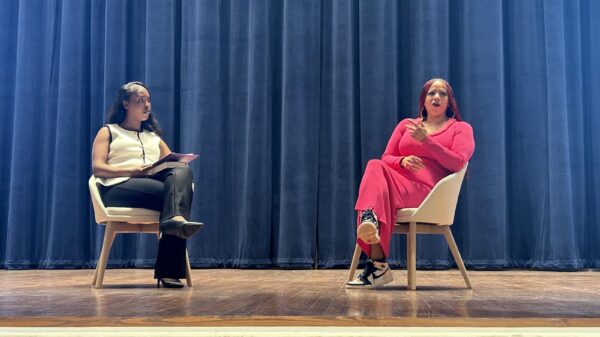The Department of Defense has awarded Howard University with a $90 million contract to establish what will be the first HBCU-led University Affiliated Research Center (UARC) in history.
The UARC, the 15th nationwide, will constitute a Howard-led consortium of nine HBCUs that will collaborate on “tactical autonomy” research for the Department of the Air Force (DAF).
Monday’s historic announcement was given by President Wayne A.I. Frederick, Secretary of Defense Lloyd Austin and Secretary of the Air Force Frank Kendall III, to more than 100 audience members on the second floor of Founder’s Library.
In his opening statement, Frederick noted that the opportunity to lead a UARC exceeded expectations of how quickly Howard could scale its research capacity.
“The timing of this was very important because about a year before, I had started talking to my team about us trying to bring a national lab to an HBCU…,” Frederick said. “To become the 15th institution to have a University Affiliated Research Center was nowhere close on our radar.”
He continued by saying, “This one, certainly, is one of the few things that represent a shining moment in my time here at Howard.”
As the first UARC to be sponsored by the DAF, the center’s concentration on “tactical autonomy” research stems, in part, from the threat of “the military modernization program of the People’s Republic of China,” Kendall said, which includes “significant investments in technologies like autonomies and artificial intelligence…”
“Tactical autonomy” research primarily involves building “autonomous technologies” that will allow for “minimal supervision from human operators in environments that are complex and unpredictable” during missions, according to the Air Force Research Laboratory (AFRL).
When the DAF announced its plan to sponsor a “tactical autonomy” focused UARC on June 28 of last year, it knew that partnering with an HBCU would be among its top objectives.
During his remarks, Austin attested that HBCUs were under awarded in research funding despite their demonstrated potential.
He referred to a few facts: HBCUs graduate 30 percent of Black Science, Technology, Engineering and Mathematics (STEM) professionals, and more than one-third of Black Ph.D. STEM holders, yet HBCUs have received less than 0.5 percent of Department of Defense research funding, according to the AFRL.
“Only a tiny fraction of the Department’s research funding goes to HBCUs. You know, that just doesn’t add up, and as Secretary of Defense, I’m determined to change that,” Austin said.
Sophomore political science major Victor Fabritz Lugo, who was in attendance on behalf of the Reserve Officers’ Training Corps, believes that the establishment of the UARC “would have a direct impact on my classmates and my wingmen as they will have more research resources from the Department of Defense and from the Department of the Air Force to continue allowing America to have the technological edge over our adversaries.”
Fabritz Lugo said, “HBCUs as a whole are underappreciated nationwide, and they deserve more recognition, and this is just more recognition to them.”
Howard chose the other eight HBCUs that would be members of the UARC consortium: Bowie State University, Delaware State University, Florida Memorial University, Hampton University, Jackson State University, Norfolk State University, Tougaloo College and Tuskegee University. According to Frederick, the other schools were chosen in part because there was an opportunity for Howard to build stronger relationships with them.
“If we could partner with all of the HBCUs we would,” Frederick said, “But we had to pick some, and I think it was just a matter of also introducing ourselves to HBCUs that we probably don’t have as close a relationship, and some that we already do have a pretty close relationship, and just trying to find a mix.”
For Howard to have been awarded the contract and its leadership role, the university had to compete with other HBCUs. In an interview with Chief Scientist of the Air Force Dr. Victoria Coleman, she said, “We had four proposals… The Howard proposal really showed, however, that it was clearly superior to all others.”
Coleman said that while reviewing applications, she and her team looked at prerequisites that a university might already have, how universities approached the tactical autonomy question and how the university proposed it would manage the consortium to “get the best out of all the schools,” she said.
“One thing that sticks out in my mind,” she continued, “was they were willing to make investments in hiring, faculty-wise… they were willing to invest substantially.”
Frederick expressed confidence that the UARC contract and subsequent research could help elevate the University from R2 research classification to R1, which indicates “very high research activity,” according to The Carnegie Classification of Institutions of Higher Education (CCIHE).
To reach R1 status, a university must offer at least 20 research or scholarship-based doctoral degrees and have at least $5 million in research expenditures each year, according to CCIHE. According to BestColleges, R1 classification could mean gaining more research opportunities for students, attracting more distinguished professors or having a stronger reputation.
Frederick emphasized that the establishment of the UARC is just continued momentum, “This is not work that has just started. Howard University, over the past two decades, has sent more African Americans to STEM PhD programs than any other institution in this country, and we have a continued commitment to that.”
The newly established UARC will be funded for five years, after which there will be an opportunity for recertification and additional funding, according to the contract details.
Copy edited by Alana Matthew








